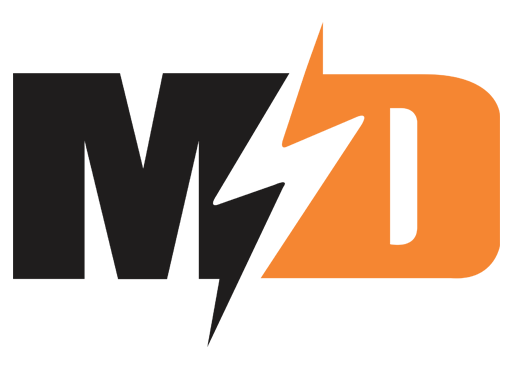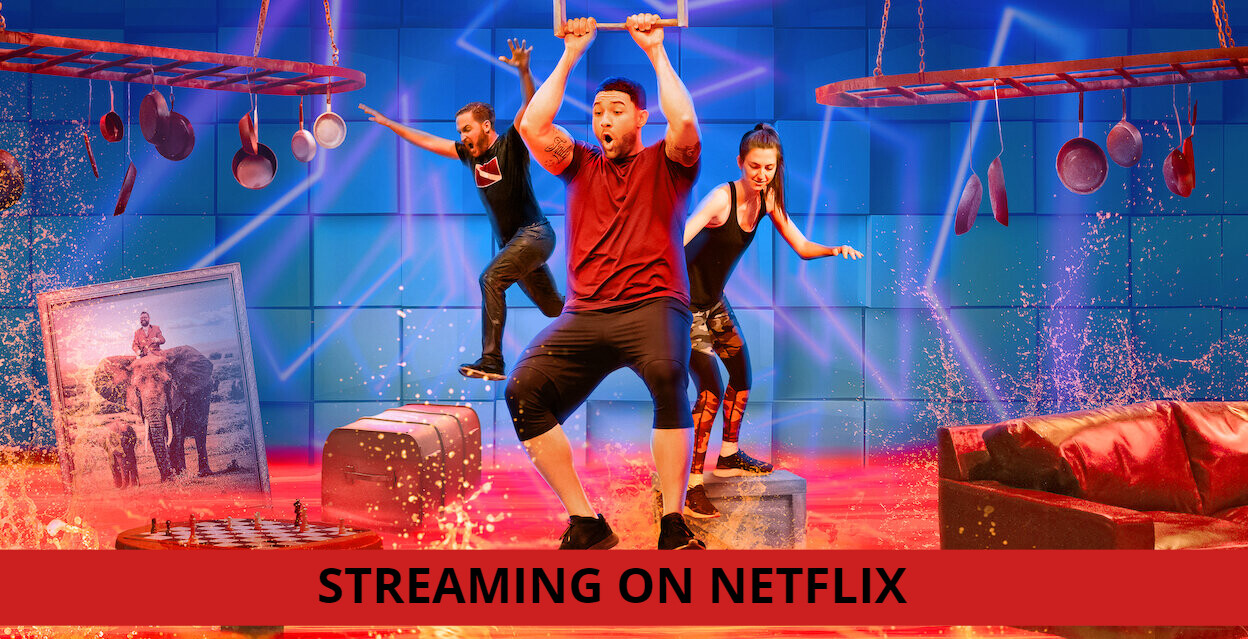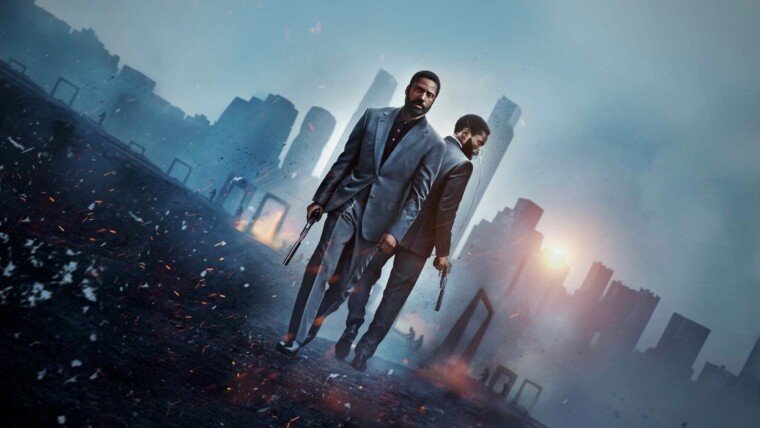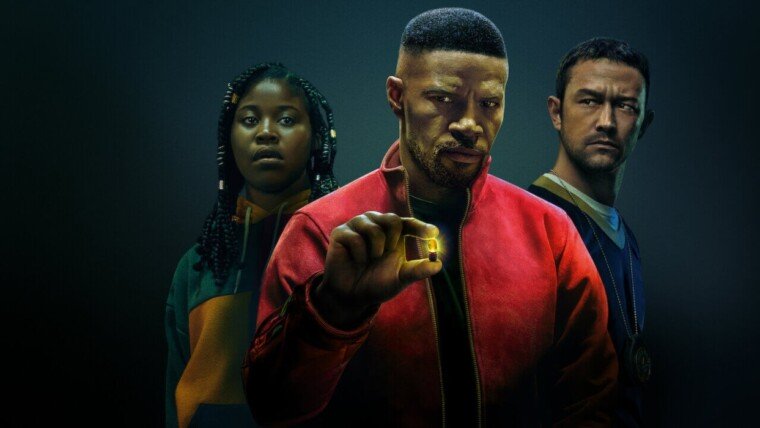Anyone who has ever had a childhood immediately recognizes some rendition of this game. The classic “the floor is lava” game. Played in furniture filed hotel rooms, in empty classrooms and pretty much anywhere with five chairs. The concept of the game is so incredibly simple and so much fun: if you touch the floor, you get engulfed in a sea of imaginary lava so crawl and climb your way to safety. Now in 2020, we’re finally seeing that concept brought to life with an elaborate, high-budget reality TV competition show. To be honest some part of me is giddy with excitement at the prospect of this childhood classic made into a real obstacle course. Another part of me, though, is a little sceptical on how much mileage Floor is Lava has. Is there more to this game show than just nostalgic novelty?
So the name of the game is pretty straightforward. Three teams of three will be placed inside an obstacle course room reflecting a different theme and location in each episode. Team members will have to work together to make sure all three of them make it from the entrance to the exit in the shortest time possible. The winning team is determined by time and the number of members who manage to complete the course. So let’s say if one team had a faster time than another but the other team has more members who survived the course, the team with more members win. If both teams manage to get all their members to the end then the tiebreaker is the time. The winning team gets 10,000 dollars and a lava lamp.
On the surface, the whole concept seems a little bare and simple. Especially when you take into account that each episode comprises only three teams tackling one course. Here’s when things get interesting, though. Unlike obstacle course competitions like Wipeout and American Ninja Warrior, players are allowed to use everything in the environment to their advantage, and I mean everything. This means that if that no one course run by a particular team in any episode is similar to another. Teams could find totally unique ways of completing the course using the platforms and objects around them. A refreshing break from the typical linear obstacle courses you’d see in other game shows. Netflix’s Floor is Lava not only rewards physical prowess and spatial awareness but also ingenuity and creativity.
 One of the more memorable moments in the show was when a contestant used a nearby portrait to bridge a five-foot gap between him and a platform leading to the exit. A prop that anyone could have easily missed. It’s almost like an open-world stealth video game a’la Hitman. There is a multitude of ways in which one can approach a particular problem and no one answer is the correct one. That being said, the show does somewhat have a set number of routes and paths that a player can take, which is explained at the beginning of each episode. It’s not really an issue seeing that it’s up to each team to figure out their own way out of the maze of platforms.
One of the more memorable moments in the show was when a contestant used a nearby portrait to bridge a five-foot gap between him and a platform leading to the exit. A prop that anyone could have easily missed. It’s almost like an open-world stealth video game a’la Hitman. There is a multitude of ways in which one can approach a particular problem and no one answer is the correct one. That being said, the show does somewhat have a set number of routes and paths that a player can take, which is explained at the beginning of each episode. It’s not really an issue seeing that it’s up to each team to figure out their own way out of the maze of platforms.
Each of Floor is Lava‘s courses are diverse and different enough to avoid repetition. The setups range from kitchens and living room spaces to space-themed rooms with tricky planet shaped platforms. Another additional twist in the game is these mystery levers and buttons scattered throughout a particular course. Depending on the episode, these buttons could do everything from providing more platforms to raising the level of the lava. A team’s attempt to exploit these mechanisms either make them or break them. It certainly doesn’t help that these buttons and levers are placed in precarious spots that require a member to risk a point to gain a potential advantage…or disadvantage.
 Altogether, Floor is Lava‘s varied level design, creative flexibility and secret buttons make team coordination and strategy an utter necessity. In terms of the setup’s and execution, the show is a glorious success. However, Floor is Lava is not without its flaws that have times broken the immersion of the game. Spoiler alert, most of them have to deal with the technical elements of how the show is presented.
Altogether, Floor is Lava‘s varied level design, creative flexibility and secret buttons make team coordination and strategy an utter necessity. In terms of the setup’s and execution, the show is a glorious success. However, Floor is Lava is not without its flaws that have times broken the immersion of the game. Spoiler alert, most of them have to deal with the technical elements of how the show is presented.
The game show’s sole host, and commentator, is Rutledge Wood, best known for his role as co-host in the US version of Top Gear. Wood does a decent enough job as the show’s host but it’s a shame that his personality never exactly shines through in any of his jokes or comments. The majority of the episodes has him delivering blow-by-blow commentary on the contestants and their time in the course. His need to force a pun or a joke in between scenes and rewind certain scenes can be distracting at times. There’s already so much going on-screen and as mentioned earlier, the game’s course is solid on its own. There’s really no need for him to suddenly pause the action, simply to make time for a quip.
 The camerawork and shots in Floor is Lava is definitely more cinematic than what you’ve come to expect from your average obstacle course game show. In lieu of stagnant wide side shots, Lava really wants to sell you the leaps and tumbles in the most dramatic fashion. Couple that with contestant banter and the show almost makes up for the Wood’s weak personality. To be fair, the real star of the show is obviously the level design and the lava so it’s all forgivable.
The camerawork and shots in Floor is Lava is definitely more cinematic than what you’ve come to expect from your average obstacle course game show. In lieu of stagnant wide side shots, Lava really wants to sell you the leaps and tumbles in the most dramatic fashion. Couple that with contestant banter and the show almost makes up for the Wood’s weak personality. To be fair, the real star of the show is obviously the level design and the lava so it’s all forgivable.
Netflix’s Floor is Lava is the kind of dumb, loud fun you’d watch to unwind and relax after a long day at the office. While at the same time, it has enough variety and mental challenges to keep the format from becoming stale. Currently, this season consists of 8 episodes with each clocking in at about half an hour. Even if you’re not a big fan of reality game shows, I’d still highly recommend you give Floor is Lava a chance. To make the most out of it though, I’d recommend doing a couple of episodes a day just so it doesn’t wear out its welcome. With a little format tweaking and continuous flow of ideas, this show has the potential to become the next big thing in reality TV. You can now check out Floor is Lava on Netflix!







